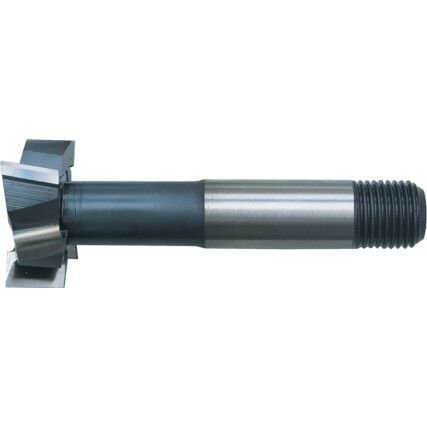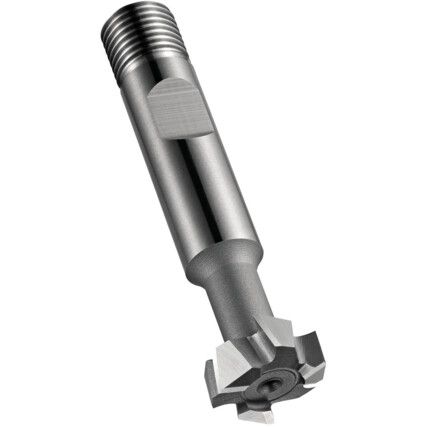T-Slot Cutters
T-slot cutters are vital for a range of milling operations, allowing users to efficiently cut T-slot tracks and grooves without hassle. Here at Cromwell, we stock a sizable range of quality T-slot cutters, from trusted national brands such as Dormer and our exclusive brand Sherwood, used by professionals around the globe.
What are T-slot cutters?
T-slot cutters consist of a plain or side milling cutter that is fitted to the end of a narrow shank. They are designed to mill T-slots into various materials and are used when a clean surface finish is required.
T-slots are milled by first milling the 'throat' of the T slot with a side or end mill cutter, and the deep 'T' groove is then milled with a T-slot cutter.
Why a T-slot cutter?
T-slot cutters are used to cut T-slot grooves or tracks into fixtures, worktables, and other items with ease. They can create T slots in all kinds of metals and woods, depending on the type of cutter you buy.
Heavy duty T-slot cutters are able to cut through even the toughest metals, such as hardened steel, cast iron, and tool steel. This would be near-impossible to achieve in a clean and concise manner without the use of a T-slot cutter.
When are T-slot cutters used?
T-slot cutters are used to cut T-slots in a wide range of materials. T-slots are used across a wide range of industries, including metalworking, woodworking, engineering, construction, carpentry as well as other general machining applications.
If you're looking for the ideal T-slot cutter (or any other milling equipment) for your job but aren't sure about the best one for your needs, feel free to ask our experts for specialised advice.
T-slot cutter types
T-slot cutters tend to differ due to their size and shank type. Below, the common shank types are listed to make our range easier to shop.
• Threaded - These have ridges that are suited for creating screw type holes as they cut.
• Flatted - These type of T-slot cutters have a flattened section in the middle of the shank of the cutter.
• Plain round - These shanks are straight, rounded and unmarked shanks.
Considerations when choosing a T-slot cutter
• Material - When browsing through T-slot cutters, you'll be faced with a few different material choices. The most common ones are HSS (high speed steel), carbide and cobalt. HSS is the cheapest and most commonly available of the three, however HSS T-slot cutters cut the slowest. Cobalt cutters boast greater durability and can cut faster - at a higher price point. Carbide cutters are a more heavy-duty choice, offering excellent speed, durability, and heat resistance. They can easily cut T-slots into hard materials, such as cast iron and alloys.
• Coatings - Modern T-slot cutters usually come with coatings improve the durability of the cutter. Whilst not always necessary, coatings such as titanium diboride and aluminium nitride may help reduce the wear and friction inflicted upon your slot drill.
• Cutter diameter - An obvious consideration, however it's important to ensure the cutter diameter is suited to achieve the desired result.
T-slot cutter jargon buster
We ant to make it quick and easy for you to shop our range of T-slot cutters, so we've outlined and explained some key terms to help you to make a confident purchasing decision.
What are the flutes on a T-slot cutter?
Like a lot of cutting tools, T-slot cutters possess flutes which are responsible for the removal of material whilst the tool is rotating. The flutes are the channels or sharp slots on the cutter.
FAQs
How to use a T-slot cutter?
In order to use a T-slot cutter, a narrow vertical slot must first be cut or milled into the workpiece. This will allow the narrow shank of a T-slot cutter to enter and create the desired T groove or track.

